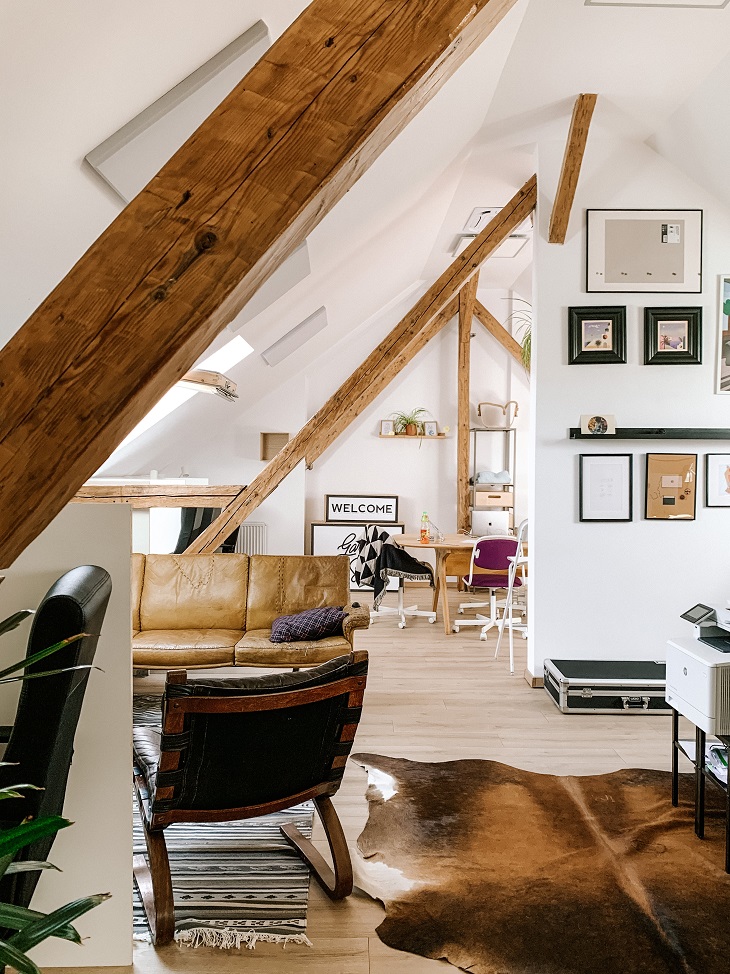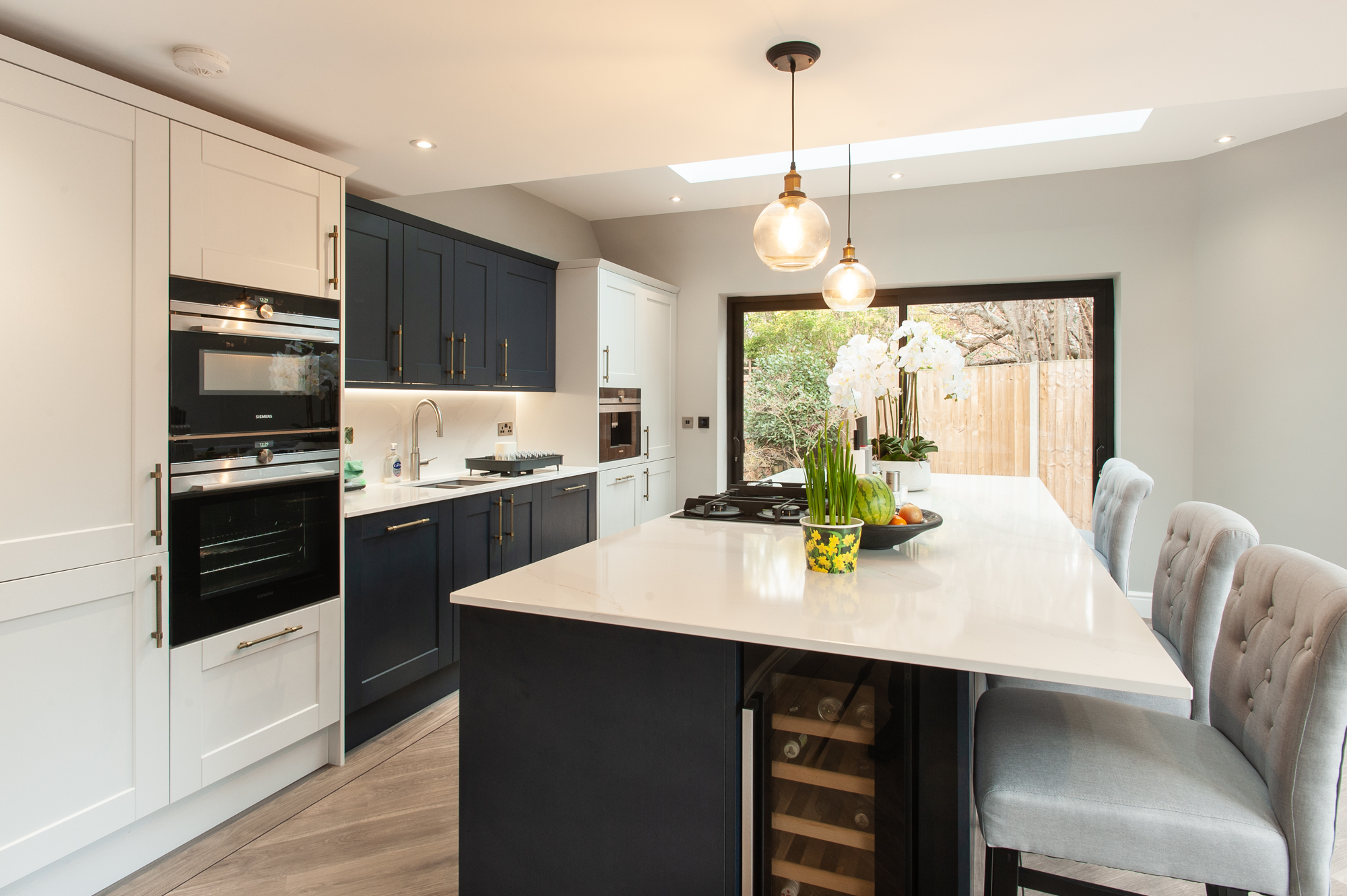The decision to convert your loft space into valuable, additional floor space within your home is an easy one. After all, in addition to being viewed as one of the simplest (and cheapest) ways to extend your living space, loft conversions also do not use up any of the outdoor or garden space that you may have. Sounds like a win-win.
However, it is not always so black and white. Hidden within the initial estimates, there may be many unexpected and unforeseen expenses that could put a damper on your loft conversion plans.
Read on below to find out how you could anticipate or even avoid these extra costs so that your loft conversion budget reflects a more realistic estimation.
5 factors that could make or break your loft conversion budget:
1. The type of loft conversion

Naturally, the design and complexity of your loft conversion have a significant impact on your overall cost.
Loft conversions are typically classified into 4 main types:
- Velux loft conversions
- Dormer loft conversions
- Hip-to-gable loft conversions
- Mansard loft conversions
Each conversion is of varying degrees of complexity, and as a result, of varying levels of affordability.
For example, Velux loft conversions mainly involve transforming the roof space into an additional room by installing skylight windows to the pitch of the existing roof, along with floor reinforcements, insulation, a staircase and connection to basic utilities. Whereas, the more complex hip-to-gable and mansard conversions entail transforming the structure of the existing roof to create additional headroom and floor space within. The process then becomes considerably more expensive.
Selecting a specific type of loft conversion is therefore a delicate balance of value and cost.
It is also best to first assess the suitability of your home before undertaking a loft conversion. This is because not all roof types or properties may be suited to a loft conversion. This is particularly true of houses with low ceilings and low-pitched roofs.
Similarly, listed homes or those in conservation areas would be limited in the structural changes that could be made without incurring additional expenses.
2. Legal and regulatory aspects

Another important, but often overlooked, factor is the special permissions that need to be obtained in order to go ahead with the loft conversion plans. These legal requirements include:
- Building regulations approval
This is a must-have when you want to convert the loft or attic space. It is used to ensure that the new build complies with standard building guidelines and safety measures. This includes the assessment of the structural integrity of the new floor or staircase installed, fire safety protocols, and the installation of adequate insulation.
The building control fee would be charged when plans for the proposed loft conversion are submitted to the Building Control Company.
- Planning permission
Loft conversions usually fall under permitted developments and do not require planning permission.
However, for more extensive work such as that which requires the extension of the roof, or if the proposed conversion does not meet the specific criteria of permitted developments, or if the property is listed in a conservation area, planning permission will be required. And a planning fee will need to be paid to the local authority.
- Party wall agreement
This is a requirement when the loft conversion involves a shared wall with neighbours, such as those found in terraced or semi-detached properties.
Party wall agreements aim to avoid and resolve any disputes that may arise between neighbours due to the construction of the loft conversion. Therefore, a party wall notice has to be given to your neighbours prior to the commencement of any construction.
And all costs pertaining to the work of the party wall surveyors must be borne by the homeowner.
- Certificate of lawfulness
This is technically not a legal requirement but is a useful document to have in hand if you are thinking of selling your property in the future. It basically proves that the loft conversion constructed is a legal build and could, therefore, help with the sale of the property.
3. Size of the loft

As with all construction projects, the bigger the space under construction, the higher the cost.
A larger space invariably means more materials, maybe even more floor reinforcements, and a larger workforce or a longer time frame. All of which will affect the final cost of the conversion project, and thereby, its value.
Therefore, simply converting the roof space (without extending outwards) might not give you as much square footage, but it just might be the best thing for your wallet if you are on a tight budget.
4. The roof

Loft conversions cannot be considered without carefully studying and assessing the existing roof’s structure. This is because any additional roof work required could end up being one of the biggest contributors to your overall budget.
Therefore, if your roof is structurally sound and spacious enough for a loft conversion, let it be. However, since you are already up there, and you spot any broken or damaged roof tiles, this may be the ideal opportunity to replace them. This not only increases your kerb appeal but also provides better protection and increased insulation, all of which save money in the long run.
5. Design and function

Naturally, how the new loft space is going to be used plays a huge part in its design and cost.
For instance, creating a bathroom or en-suite with all its plumbing requirements and fittings would be considerably more expensive than designing a modest home office. Add to that the different materials required for flooring, tiling, paintwork, insulation, and interiors; and it becomes a lot.
But it does not have to be so costly.
Using the space creatively and designing it to optimise its features and functionality is entirely possible.
For example, installing a single large window in place of several smaller ones not only cuts down the labour and time costs but gives the room a wonderful focal point. Similarly, creating storage spaces within awkward corners helps avoid the need to spend on additional storage solutions.
So, while it is easy to envision all the different ways by which you could put the additional space to use, you must first ask yourself if this space adds value to your home and lifestyle. And if that value is more or less than the cost of the conversion?
Basically, keeping it simple need not be a bad thing. And for a loft conversion, it may actually be the best way forward.
Conclusion
Loft conversions are undoubtedly one of the best ways to extend your property while using up the awkward loft corners to create wonderful spaces that add so much to your home.
And though various factors could bring up the cost much more than you bargained for, it is also important to realise that the cost of a loft conversion may be easily made up by the value it adds to a property. Loft conversions generally increase the value of a property by 10-20%, so if the cost of the conversion is less than that amount, it is a very worthwhile investment.
And best of all? With the right help and expert advice, it is actually easy to design and create your dream conversion at your specified budget. Afterall, who better to know the tricks of the trade rather than the traders themselves?
If you are looking at different ways to design and create the ultimate loft conversion that is as valuable and cost-effective as it is spacious and luxurious, get in touch with us! At Good Design and Build we pride ourselves in offering you a complete solution, from planning to completion. See our recently completed projects, get inspired, and start your dream home journey with us today!




